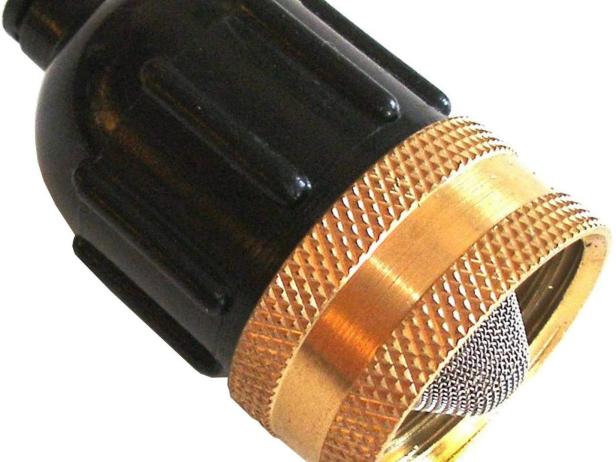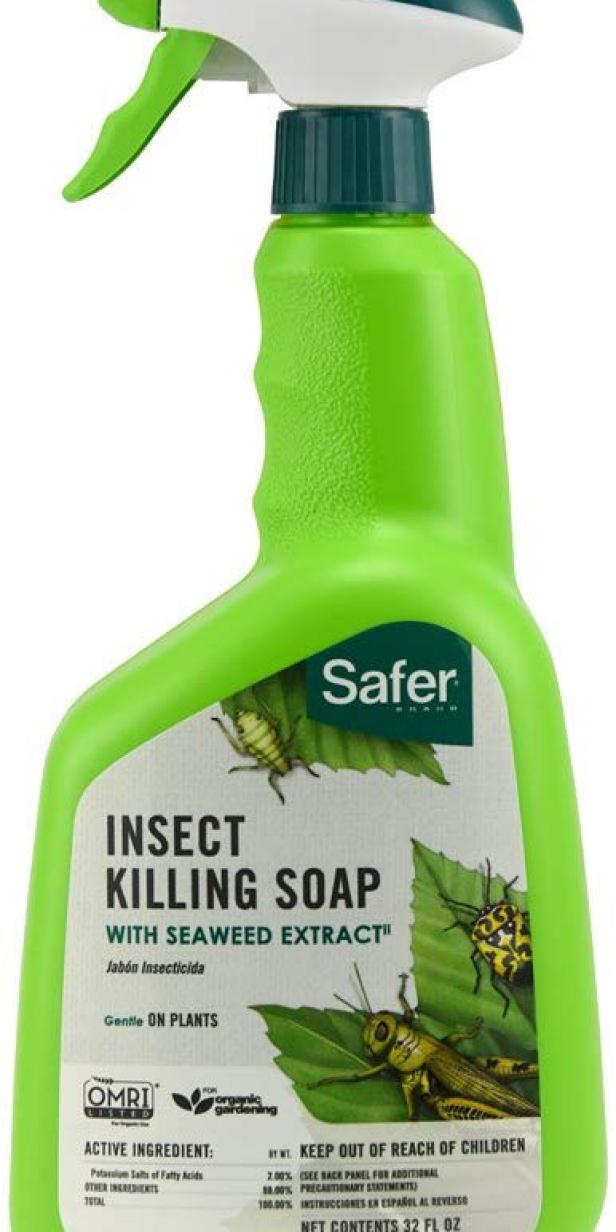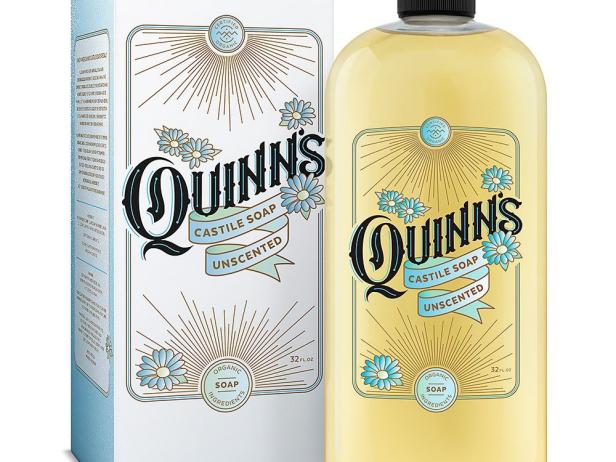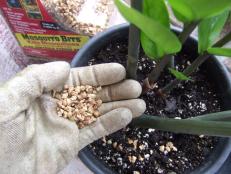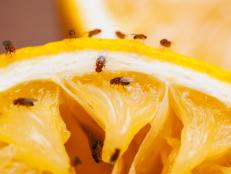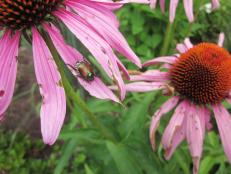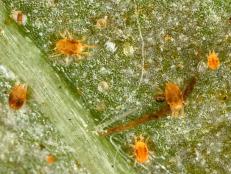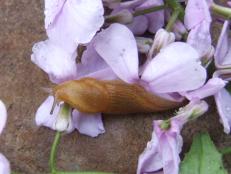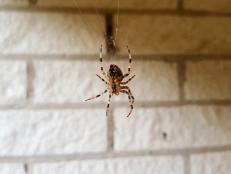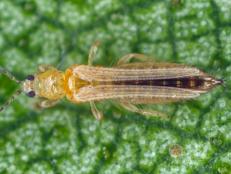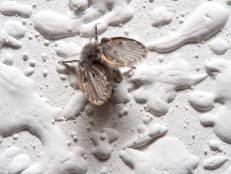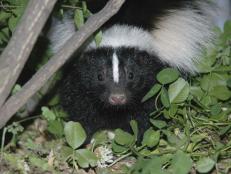How to Get Rid of Aphids
Find out from the garden experts at HGTV how to identify and get rid of aphids.
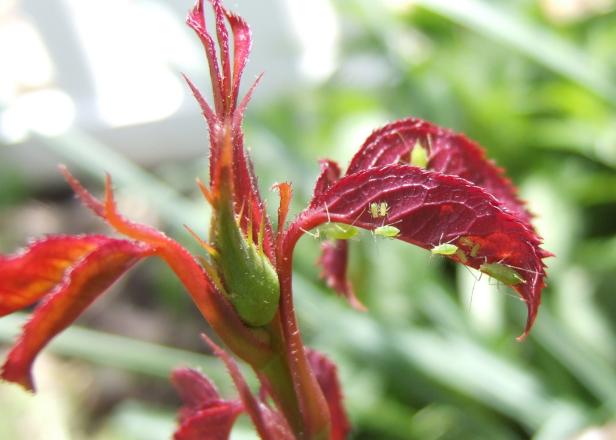
Julie Martens Forney
Aphids love new, tender growth on plants, like this rose bud. Look for aphids during the cool seasons — spring, fall and early winter. Gray cabbage aphids can survive snowy weather hidden on brussels sprouts and kale leaves.
Whether you garden indoors or out, at some point you will encounter aphids. Also known as plant lice or greenflies, these pesky pests literally suck the life out of your plants — they're the vampires of the plant world. Aphids have a hollow, straw-like mouth that's sharp. They plunge it into a plant and then suck sap through it.
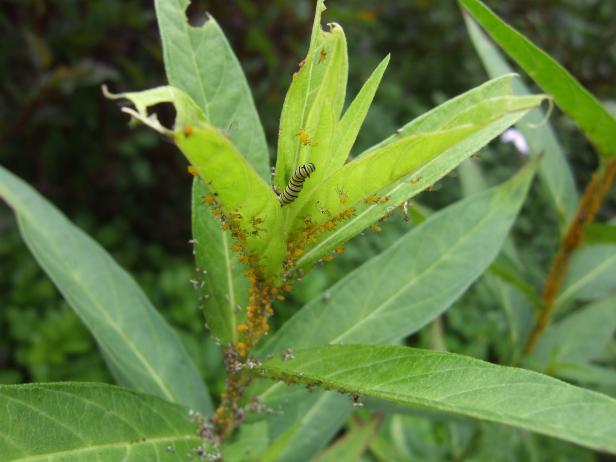
Julie Martens Forney
Aphids can be plant specific, like these orange milkweed aphids. They tend to appear on milkweed stems, leaves and seed pods in late summer and early autumn. A monarch butterfly caterpillar isn’t bothered by the aphids.
Aphids are a colorful bunch. Their bright shades include lime green, dazzling orange and blood red. Other common types are black or gray. When aphids feed, it's always a party — you'll rarely find just one. Instead, they tend to cluster together, which is one of the ways you'll typically spot them: because there are so many. They're not heat tolerant, so they tend to be a problem in spring and fall.

Courtney Celley for U.S. Fish & Wildlife Service at FWS.gov
Ants and aphids have a complex relationship. Ants harvest the honeydew that aphids secrete as they suck on the sap of plants. Ants farm the aphids, herding them into clusters to make it easier to gather honeydew.
As aphids suck plant sap, they secrete honeydew on their backsides. Just like its namesake, honeydew is sweet and sticky — and it attracts ants by the dozens. That's another clue you have aphids: when you see lots of ants on your plants. Ants actually farm aphids, herding them together (they pick them up and carry them) to make it easier to gather more honeydew. Ants also milk aphids, literally squeezing their bodies so they secrete more honeydew.
How Aphids Hurt Plants
Aphids harm plants in several ways. By piercing the plant and removing sap, they weaken the plant. Because sap flow reduces, leaves become twisted, cupped and generally misshapen. New growth tends to be smaller and sickly looking.
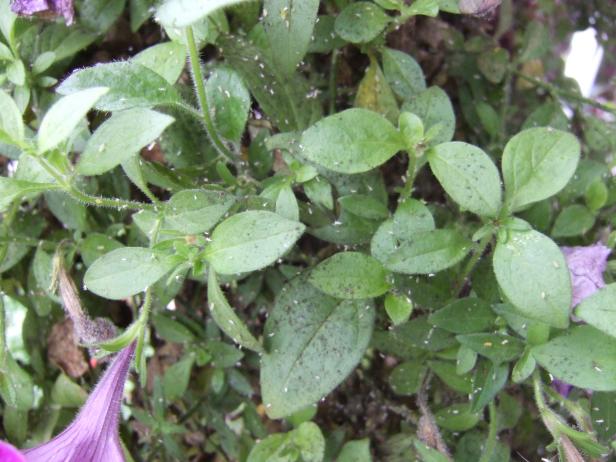
Julie Martens Forney
As aphids grow, they shed their exoskeletons, which become stuck in the honeydew that aphids secrete. The honeydew also provides ideal conditions for fungal growth, like the black sooty mold seen here.
The honeydew that aphids secrete provides an ideal food for fungus. Often when a plant is infested with aphids, you'll see black mold on the leaves. Plants also become sticky and may be covered with white bug skins, which are shed aphid exoskeletons. (They shed their skin as they grow.)
The last way that aphids hurt plants is by injecting viruses. There's no cure for plant viruses — once a plant has one, it's infected for life. Worse yet, that plant becomes a vector; an endless source of virus that aphids and other insects can spread around your garden. Some viruses kill plants quickly; with others, it's a slow, lingering death.
15 Ways to Get Rid of Aphids
The bottom line is that aphids are a garden pest you shouldn't ignore. The good news is that there are lots of easy ways to get rid of this sap-sucking bug. Inspect your garden regularly so that you catch infestations early, when they're easiest to control. Try one of these 15 techniques to get rid of aphids and keep them from infesting your plants.
1. Use your hands
Aphids have soft bodies that are very easy to squish. Pull on a pair of nitrile garden gloves (so you can feel what you're doing), and run your fingers along stems and leaves, squishing the aphids you see. You can also pick them off plants and drop them into a container of soapy water.
2. Prune out pests
Remove leaves or parts of plants with the greatest infestation. This works really well with plants like kale or leaf lettuce, where you can remove entire leaves with their aphids attached. Use care removing too many leaves on young plants or you risk harming the plant. When pruning, keep an eye out for beneficial insects that might be eating the aphids. Relocate them to other parts of the plant.
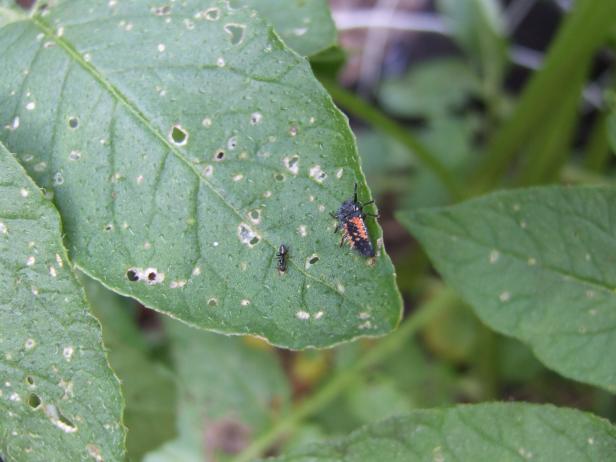
Julie Martens Forney
Ladybug larvae eat up to 50 aphids per day. Learn to recognize these "baby” ladybugs, which have soft bodies and similar colors of black and orange or red. Green lacewing larvae are known as aphid lions and eat up to 100 aphids per day.
3. Grab the hose
Spray aphids off plants with a blast of water from your hose. This works best on mature plants. Spraying young, tender growth might damage it. Look for the Bug Blaster, a hose-end attachment that sprays a 360-degree wall of water ideal for knocking insects off plants.
4. Pull weeds
With more than 4,000 different types of aphids, they can hang out on all kinds of plants. Keep your garden weed-free to eliminate potential aphid hideouts.
5. Avoid over-fertilizing
Aphids love lush, soft plant growth. If you feed your plants too much nitrogen, that's the kind of growth they produce. Instead, choose a slow-release organic fertilizer.
6. Bring on beneficials
Insects that eat pests are known as beneficials. Two of the best known beneficial insects that feast on aphids are ladybugs and green lacewings. The young or larval forms of these insects eat aphids ferociously. A ladybug larva (shown above) eats up to 50 aphids per day; a green lacewing larva gobbles 100. Other aphid-eating beneficials include syrphid flies, predatory wasps, assassin bugs and spiders. The best way to encourage beneficial insects is by not using pesticides in your garden. Include plants that attract these insects, such as sweet alyssum, yarrow, fennel, dill or mint.
7. Spray insecticidal soap
Look for Safer’s insecticidal soap, a short-lived natural pesticide. Follow label instructions for the best results. With most sprays, you'll need to spray more than once over a period of a few weeks to kill all insects present (some will hide and survive the spray). Soap sprays must come in direct contact with an aphid to kill it. Be sure to spray leaf undersides and inside curled or cupped leaves.
8. Mix some soap
You can mix your own soap spray using Castile soap. Mix a very diluted solution (start with 3/4 teaspoon per quart of water). Do not substitute dish detergent or dish soap, hand soap, or any other soap product with degreasing or moisturizing properties. Please note that this soap spray you mix is not a true insecticidal soap like Safer's. It can damage some plants and will have varying effectiveness against aphids (depending on how many there are, how often you spray, etc.).
9. Try horticultural oil
Usually gardeners apply these types of oils early or late in the growing season to kill eggs. Follow label instructions carefully. Neem oil is a type of horticultural oil that's usually sprayed directly on aphid infestations to kill these pests.
10. Welcome birds
Hang some birdhouses for wrens, finches or chickadees. These tiny insect-eating birds really help clean up an aphid problem on plants.
11. Kill 'em with fungus
BotaniGard ES is a type of biological insecticide. It contains a fungus, Beauveria bassiana, which attacks aphids (along with other pests). You may have to apply it weekly until aphids are under control, but it's a great alternative to chemical pesticides.
12. Select plant-based sprays
Known as botanical insecticides, these aphid killers are derived from plants and break down more quickly in the environment than traditional chemical-based insecticides. Look for products containing the plant compound pyrethrin, derived from chrysanthemums.
13. Change your mulch
Aluminum foil or some other reflective mulch works to help keep aphids off plants.
14. Get earthy
Sprinkle diatomaceous earth on aphids to kill them. This treatment is tricky to use because it can also harm beneficial insects that wander into it. Try to keep it confined to clusters of aphids.
15. Clean up
At the end of the growing season, gather and dispose of plant waste, especially any that had aphid infestations. Aphids overwinter as eggs on bits of plants, so when you clean up, you're removing next season’s pests.








